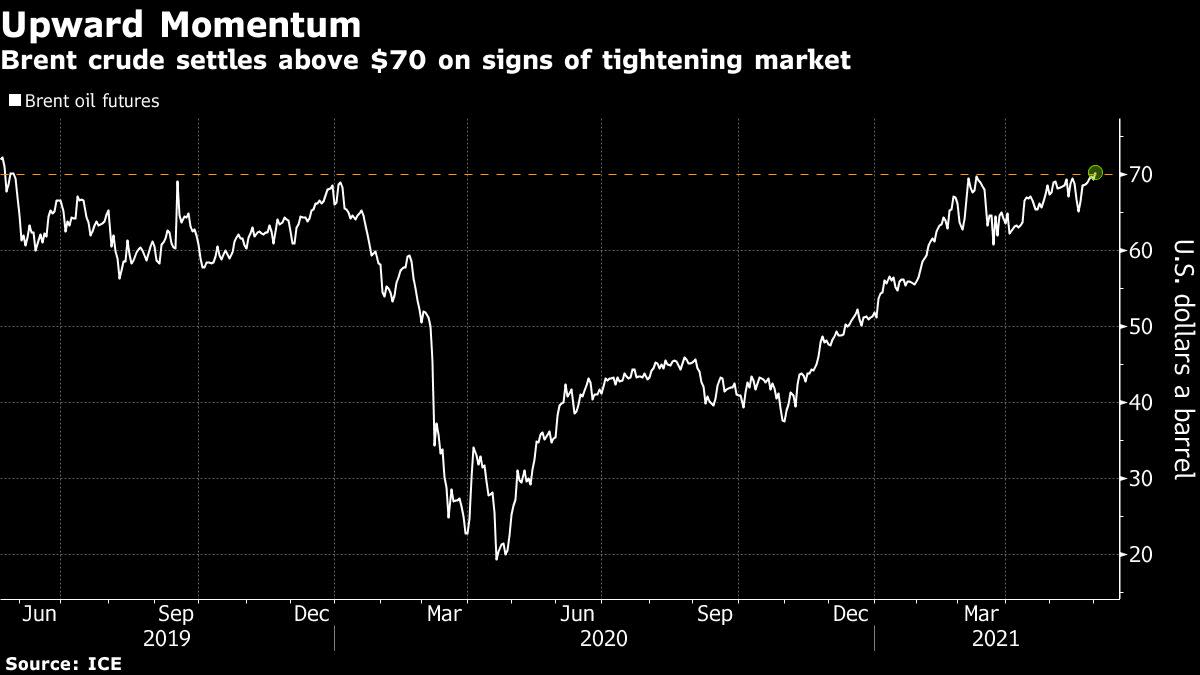Oil Rises From Highest Since 2018 on Bullish Western Demand

(Bloomberg) — Oil extended gains amid signs of a recovery in demand in parts of the western world, and after OPEC+ provided an upbeat assessment of the market’s outlook.
Futures in New York rose 0.8% after closing at the highest since October 2018. Brent also climbed after settling above $70 a barrel. U.S. gasoline demand was the highest since the pandemic began last week, according to Descartes Labs, while traffic on U.K. roads was higher than pre-pandemic levels for the first time.
That comes a day after Saudi Energy Minister Prince Abdulaziz bin Salman on Tuesday said consumption “has shown clear signs of improvement” as the OPEC+ alliance rubber-stamped an output boost for July.
The market’s structure has rallied, with the spread between the nearest two December contracts for West Texas Intermediate heading for the strongest close since 2019. That gauge indicates growing expectations for market tightness.
Crude’s rally to a two-and-a-half year high was aided by an indication that world powers and Iran aren’t likely to revive a 2015 nuclear deal any time soon. There was hope an agreement would be reached this month, but participants in the talks are set to head back to their capitals after meeting Wednesday, cooling speculation that the U.S. might soon lift sanctions on Iranian oil exports.
And while demand is recovering in parts of the West, the spread of Covid-19 in India and other parts of Asia continues to offer a regional menace to consumption.
“The oil market welcomed the OPEC+ decision to stick with its existing production plan, and in conjunction with positive global demand indications, prices are gaining further today,” said Louise Dickson, oil markets analyst at Rystad Energy. “But the demand euphoria is still receiving daily doses of reality as Covid-19 cases are boundlessly spreading in India and other parts of Asia.”
The rally in market structure is rippling all the way along the futures curve. U.S. crude for December 2022 was about $3.50 more expensive than futures for a year later, the strongest for that gauge since October 2018 on a rolling basis. Still, the pandemic is casting a shadow over the demand picture for the second half of this year.
More stories like this are available on bloomberg.com
Subscribe now to stay ahead with the most trusted business news source.
©2021 Bloomberg L.P.




